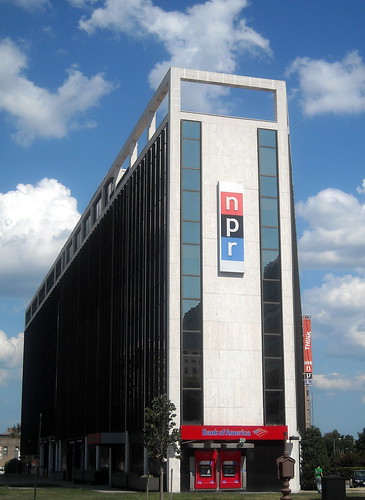Do you still have privacy on Facebook? How to restore your privacy settings
5 Tips to Staying Safe on Facebook
While meeting with students from Wakefield High School in the Washington suburb of Arlington, Virginia, President Obama was asked for advice from a ninth grader who wants to be president someday. Julianna Goldman and Kate Andersen Brower reported for Bloomberg:
Obama offered, what he called some “practical political advice .. saying that “when you’re young, you know, you make mistakes and you do some stupid stuff.”
“I want everybody here to be careful about what you post on Facebook, because in the YouTube age whatever you do, it will be pulled up again later somewhere in your life,” Obama said. “That’s number one.”
Goldman and Brower wrote that Obama also offered “I’ve been hearing a lot about young people who, you know, they’re posting stuff on Facebook, and then suddenly they go apply for a job,” Obama said to laughter.
Obama isn’t the only one offering advice on being safe on FaceBook. Recently, Sarah Perez of ReadWriteWeb provided great tips to staying safe on FaceBook, no matter your age, in her article “5 Easy Steps to Stay Safe (and Private!) on Facebook”.
According to Sarah:
Unbeknownst to most mainstream Facebook users, the social network actually offers a slew of privacy controls and security features which can help you batten down the hatches, so to speak. If used properly, you’ll never have to worry about whether you should friend the boss and your mom. You can friend anyone you want while comfortable in the knowledge that not everyone gets to see everything you post.
The problem in implementing these privacy options is that they’re just too confusing for most non-tech savvy people to handle. And often, folks don’t want to bother to take the time to learn. To simplify the process, we’re offering five easy steps you can take today to help make your Facebook experience safer, more secure, and more private.
Sarah’s provides five detailed but easy steps to follow steps on staying safe. Briefly, these steps are:
Step 1: Make Friend Lists
This step–although time consuming–according to Sarah “will be one of the most useful things you can do on Facebook.”
Step 2: Who Can See What on Your Profile
In this step, you will need to “think carefully about the sorts of things you want public and the things you want private. Should “everyone” get to see photos you’re tagged in? Or would you like to limit this only to those you’ve specifically chosen as Facebook friends?”
Step 3: Who Can See Your Address and Phone Number
You can also determine who can see your address and phone number from FaceBook. You probably don’t want everyone to have access to your home address and phone number.
Step 4: Change Who Can Find You on Facebook via Search
Step 5: Stop Sharing Personal Info with Unknown Applications
According to Sarah, “Using Facebook’s default settings, you’re unknowingly sharing a plethora of personal information (and your friends’ info too!) with various Facebook applications and the developers who created them. The problem is so bad that the ACLU recently created their own Facebook Quiz to demonstrate how much information an app has access to.”
In this step, Sarah walks you through how to stop sharing your personal information.
You can read the entire article here
What steps are you taking to stay safe on Facebook?
Filtering out FaceBook Friends
Fighting Breast Cancer One Tweet at a Time
Last month Health.com took a look at whether Twitter and Facebook could help in the fight against breast cancer in an article by Sally Chew and Heather Mayer. Chew and Mayer reported in the beginning of their article, “Twitter and other social media sites are often perceived as the ultimate navel-gazing tools. Seemingly a narcissist’s dream, many think that Facebook status updates and the 140-character Twitter messages (known as “tweets”) are really just boring play-by-plays of daily life—I had granola for breakfast! I’m stuck in traffic!”
The reporters described how Laurie Brosius, 31, a business analyst in Dallas, raised $6000 through Twitter for a walk for breast cancer to honor her husband’s deceased mother. Brosius raised 50 percent of the money through strangers that found her original tweet through the power of re tweets, people sending out her original tweet requests to their followers.

![]() photo credit: Steve Beger Photography (Beger.com Productions)
photo credit: Steve Beger Photography (Beger.com Productions)
In their article “Can Twitter and Facebook Help Fight Breast Cancer?” Chew and Mayer write:
In a busy world, Twitter posts are succinct and to the point, and that’s one of the main reasons they’re so successful in charity promotion, says Adam Hirsch, the chief operations officer of Mashable.com, a social media blog. Navigating websites can be time-consuming, notes Hirsch. Twitter, however, states a user’s case in no more than 140 characters. “It’s a message you know people will read because, face it, it’s only 140 characters,” he says.
With Twitter, users can interact one-on-one, but they can also broadcast a message to many followers. Even if an individual doesn’t have a lot of followers (say, just family and friends), those people can re-tweet that message in outgoing concentric circles of social contacts—potentially reaching thousands.
In the article, Chew and Mayer also write about breast cancer survivor Sharon Adams who took on Facebook after the social media company took down photos Adams had posted “of her ropy red mastectomy scars” in the hope of shocking her friends in England into “checking their own breasts for cancer.”
What ensued was an avalanche of media attention and a 3,000 Facebook member protest. Facebook eventually relented and allowed her pictures to be posted. Adams saw the whole controversy over her photos as a benefit. More people became aware of her story and the need to do breast exams than would have if Facebook had not removed her pictures.
You can read the entire article here.
Have you used any social media sites to raise awareness for a cause that you believe in?
How to Politely Delete Facebook Friends
Have too many Facebook friends? Do you know how to filter out “friends” that you don’t want to follow so closely without offending them? Nicholas Carlson in his recent post for Silicon Alley Insider provides an eight step approach to do just that. You can read his entire article “How to Filter out Facebook “Friends” “ here.
Is NPR the Future of News Media
In Josh Catone’s recent article in Mashable “Why NPR is the Future of Mainstrem Media“, he describes how National Public Radio (NPR) “is starting to look like they have the future of news all figured out. Or at least, they appear to doing a lot better at it than the rest of the traditional media.”
Catone reports that NPR now has 23.6 million people ” tuning into its broadcasts each week. In fact, NPR’s ratings have increased steadily since 2000, and they’ve managed to hold on to much of their 2008 election coverage listenership bump (with over 26 million people tuning in each week so far in 2009), unlike many of their mainstream media counterparts.”
Why has NPR been so effective at building its audience while the majority of media outlets are losing their audience? According to Catone the reason for its success lies in its three prong approach: a focus on local; a focus on social media; and a focus on obiquitous access.
By focusing on what is happening locally, NPR fulfills a need that has been abandoned by most media. Catone reports, “Focusing on local information is a very smart approach for two reasons. One, because as Schiller says, it fills a gap in coverage, and two, because many people feel that delivering and aggregating hyperlocal content will be an important part of the future of media. In 2007, Alex Iskold, the CEO of semantic web application company AdaptiveBlue, predicted the rise of hyperlocal information, indicating that extremely targeted local advertising could be the path forward for the ad industry.”
NPR has also built its audience by building a strong social media presence. NPR’s Twitter account has more than 780,00 followers and NPR has more than 400,000 FaceBook fans. In addition, NPR has more than 650 podcasts, nearly 20 blogs, as well as their own social community.
According to Catone:
Perhaps the most important aspect of NPR’s approach to new media, is that they have an organizational level commitment to allowing listeners and readers to access their content on their own terms. Schiller, who prior to joining NPR at the start of this year was the SVP-GM of The New York Times web site, told mediabisto.com that NPR aims to bring people access to content “online, mobile, whatever people want, podcasts — you name it — so that you have that same sense of the NPR experience wherever you are. As far as NPR.org — sure, I want the traffic to increase, but to me the ultimate goal is not just bringing people to this walled garden that is NPR.org.”
NPR’s ability to build its audience is certainly impressive especially at a time when so many media outlets are going under. What lessons can your organization learn from NPR’s success?

